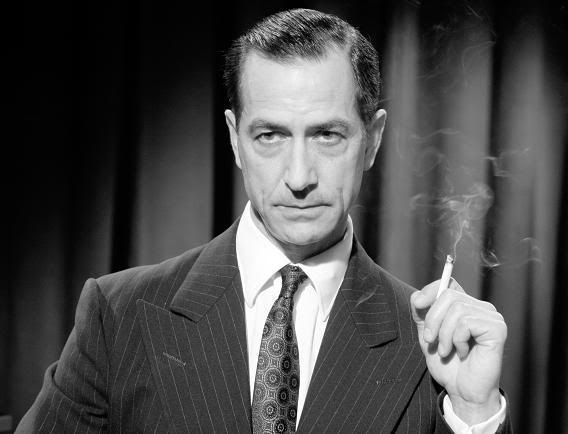Jovan
Suspended
- Messages
- 4,095
- Location
- Gainesville, Florida
I suppose. I do fall into the minority here that dresses up because they like to.
I think you fall into the minority in the public at large, but I am not sure if that's true with the minority here at the Lounge.Jovan said:I suppose. I do fall into the minority here that dresses up because they like to.
scarmebb said:I can assure you that I have no idea who Biltmore Bob is.
 Gustin Vintage Heavyweight Sweatshirt - Natural Rainbow Nep - $119 Rugged 14oz cotton that gets better with every wear.
Gustin Vintage Heavyweight Sweatshirt - Natural Rainbow Nep - $119 Rugged 14oz cotton that gets better with every wear.  Grant Stone Diesel Boot Dark Olive Chromexcel - #395 Goodyear welted, Horween Chromexcel, classic good looks.
Grant Stone Diesel Boot Dark Olive Chromexcel - #395 Goodyear welted, Horween Chromexcel, classic good looks.  Himel Bros. - The Ross Mk. 1 Leather Jacket Classic D-pocket motorcycle/aviator style jacket.
Himel Bros. - The Ross Mk. 1 Leather Jacket Classic D-pocket motorcycle/aviator style jacket. I certainly hope this is the case. Perhaps you should read some of the existing threads and get a feel for the place and the tone of the discourse here, before posting further.scarmebb said:I am just here to learn and post on the hat forum and hope not to disturb anybody.
manton said:inconvenient facts. 1) Vents are a relatively recent innovation, ... 2) The handful of people whom most of us would agree were among the very best dressed men of the 20th century -- Astaire, Grant, etc. -- did not wear vents.

OK, well, I meant on the modern lounge suit. Those did not routinely take vents until after WW2.Marc Chevalier said:First, vents are not at all a recent innovation: they've been around since the 17th century, when Louis XIV popularized the long-skirted coat.
Maybe my memory is bad. I remember almost exclusively no vents on him. I have a lot of still scans of him, too, and his coats are non-vented. Ditto the pics of him in most of my books. The one scan I have of him in vents is from Funny Face (late 50s), and the vents are quite short (8" or less). The 30s scans all show him in no vents. Ditto Grant, Cooper, Bogart, etc.As for Fred Astaire, watch his musical films: in every one of them, including those from the 1930s, Astaire's suit jackets and sportcoats always had side vents or center vents. The reason is logical: Astaire had to dance in these clothes, and vents kept the coats from impeding his movements.
manton said:In the US, [the wearing of buttondown shirts with suits] has been common at least since the advent of the trad era in the early 50s. One iron rule, however, was no BD collar with a DB suit. Yet Astaire broke that one all the time. Not being Astaire, I personally don't dare.
Baron Kurtz said:Ah, my mistake. I guess that the bb at the end of the name threw me for a loop. Please accept my apologies, and welcome to the board.
bk

manton said:OK, well, I meant on the modern lounge suit. Those did not routinely take vents until after WW2.
Oh, I agree. There many things which most of us won't do but when we see it on Astaire or Grant or someone, we say, "But it looks good on him." That didn't even look good on him, if you ask me. Shudder.Marc Chevalier said:I don't think that even Astaire should have dared it.
True, the BD with suits thing -- like the whole trad look -- was a collegiate look before WW2. Ivy leaguers were expected to dress differently when they grew up and got jobs. The look only became acceptable for grownups in Manhattan offices after WW2.As for wearing buttondown shirts with suits, Princetonites did that since at least 1910. F. Scott Fitzgerald wore Brooks Brothers buttondown shirts with 3-piece tweed suits during his undergraduate years there (in the 'teens), and he wasn't the only one. In fact, Fitzgerald never stopped wearing the combination.
manton said:Ivy leaguers were expected to dress differently when they grew up and got jobs. The look only became acceptable for grownups in Manhattan offices after WW2.
This pattern of thinking might be a natural inheritance from the days when one ethnic group predominated in the trade (in much the same way that professional musicians' tendency to be overly pedantic owes a lot to the days when German teaching dominated American music schools).Marc Chevalier said:Sartorial guidelines and rules begin to take on the aspect of Talmudic law: put three differing scholars in a room together and you end up with five different opinions.
Funny, I have never seen the Ask Andy trads mention this book. I will check it out.Marc Chevalier said:There is a wonderful book that goes into this style -- and those who wore it -- in great detail. The author is a national treasure, and far ahead of her time: Elizabeth Hawes.
The book? Men Can Take It. Illustrated by James Thurber, it was published in 1939. http://www.worldcatlibraries.org/wcpa/top3mset/fb4490524a45de95.html
.
manton said:Funny, I have never seen the Ask Andy trads mention this book. I will check it out.